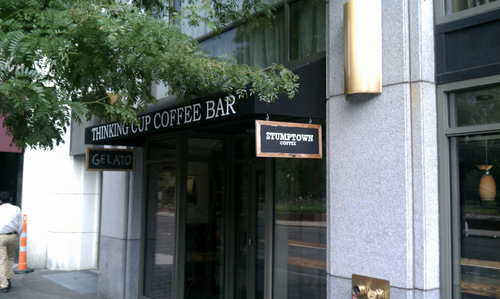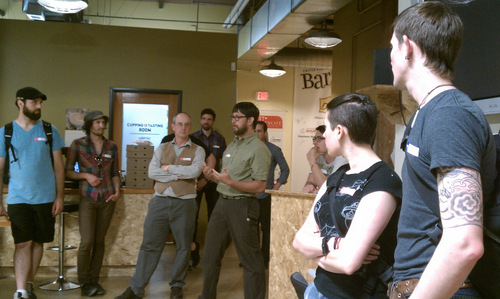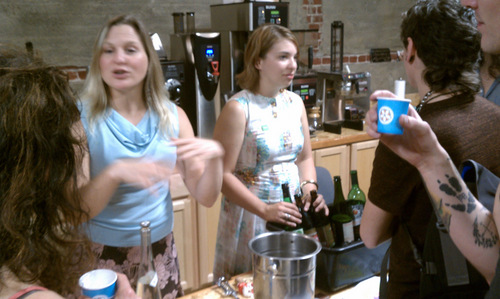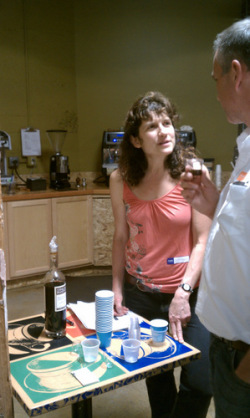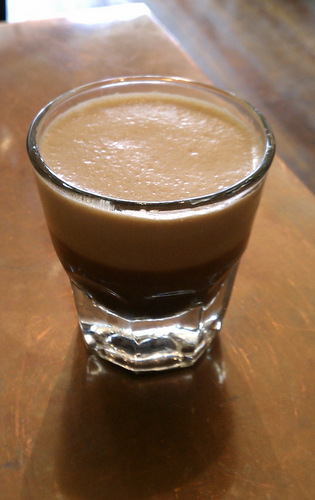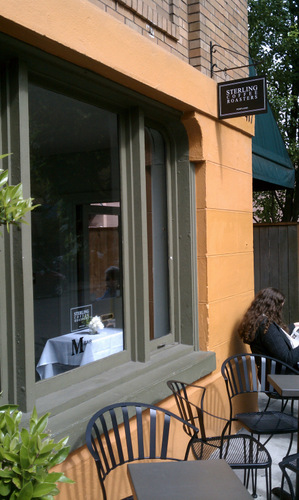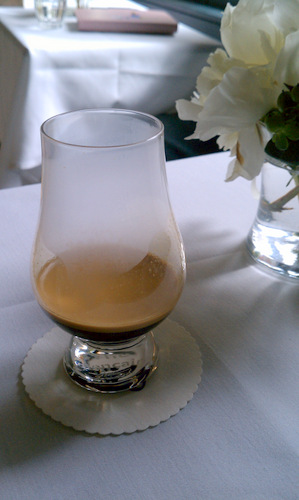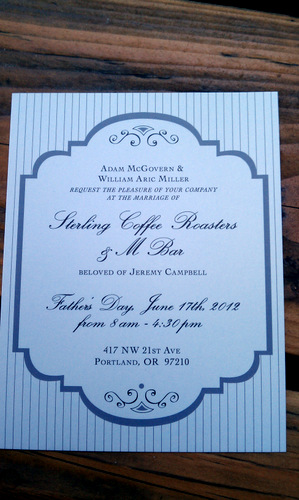We spent a few days in Boston last week, and the trip reinforced my belief that Portlanders are very spoiled by the amount of high-quality coffee available to us.
The first thing you notice when you drive around Boston (rather, the first thing I notice) is the presence of Dunkin’ Donuts shops everywhere. There are even more Dunkin’ Donuts than Starbucks. Apparently, Massachusettsans (or their less-polite fellow citizens) like bad coffee. Dunkin’ tried to establish itself in Portland a few years back, but the city’s coffee connoisseurs ignored the company, so it left town.
But Boston is not Portland, and Dunkin’ Donuts has a special place in the hearts of New Englanders. The chain was founded in 1950 in Quincy (pronounced quin-zee), Massachusetts, a few miles south of Boston. From the original shop, the business has grown to approximately 7,000 stores in the US alone (10,000+ around the world). Earlier this year, Dunkin’ announced it wants to double the number of US stores in the next two decades (a sign of the impending apocalypse?). The success of the business is unquestionable. The quality of the coffee, on the other hand…..
Give it a shot
Trying to keep an open mind, I stopped in at a Dunkin’ Donuts one morning and ordered a small coffee. The server asked if I wanted it “regular,” which, in Massachusetts, really means “with milk and sugar.” I said yes.
The coffee, unfortunately, met my expectations. It tasted like lightly-sweetened water. Bleh. It puzzles me that Dunkin’s coffee is so popular, but there is more behind the company’s success than just coffee.
In Boston, drinking DD coffee is almost a badge of honor, a symbol of loyalty toward the place New Englanders call home. People drink Dunkin’ Donuts’ coffee, not because it is high quality, but because it communicates something about their values. They identify with Dunkin’s working class, egalitarian American ideals (“America runs on Dunkin’”). In other words, Dunkin’ serves the common coffee drinker.
When I worked for Starbucks in Boston, customers would occasionally come into the store and grumble about the cup sizes, saying something like, “I just want a large. I don’t speak Italian, or whatever that is,” implying that Starbucks’ use of a foreign language was elite West Coast snobbery (I wonder what the customer would think of this post). In the least snarky voice I could summon, I would reply, “That’s okay, we speak English here too.” (Hopefully, they detected some sarcasm, but not too much.)
The marketing/branding lesson in the story is that it takes more than just a quality product to be successful. You have to have something that resonates with your customers’ values.
Hope for future coffee snobs
Given Dunkin’s history in the Northeast, it would be a challenge to separate New Englanders from their DD coffee, but people are building a better coffee scene in the “Hub of the Universe.”
Thanks to some enterprising Bostonians, it is possible these days to find good coffee with a little effort. One shop providing better beverages is Thinking Cup, a café across from Boston Common that serves Stumptown coffee. The shot of Hair Bender they served me was not quite what you would get from Albina Press (where I’m sitting as I write this), but it was tasty.
Other quality cafés are popping up around the Boston metro area too. Unlike five years ago, when DD or Starbucks was about all you could find (in addition to the Italian coffees in the North End), these days you can find Stumptown, Counter Culture, Intelligentsia and George Howell coffee if you know where to look. That’s a significant improvement, and I expect to see the trend continue in the future. Boston will be hosting the 2013 Specialty Coffee Association of America Event, which means that the pressure will be on for Boston cafés to show off their best stuff. Boston might not be ready to take the title of America’s Best Coffee City from Portland, but it is heading in the right direction.
 Tuesday, July 31, 2012 at 9:29PM
Tuesday, July 31, 2012 at 9:29PM 


